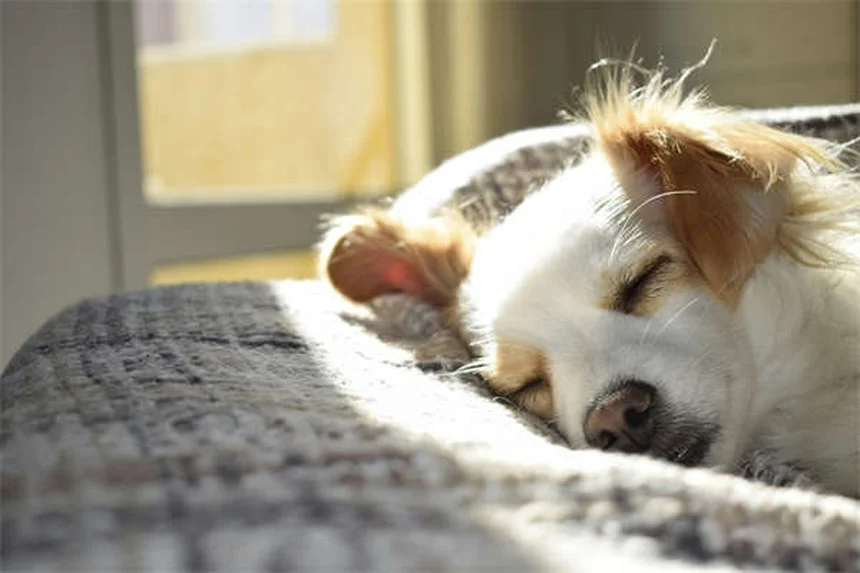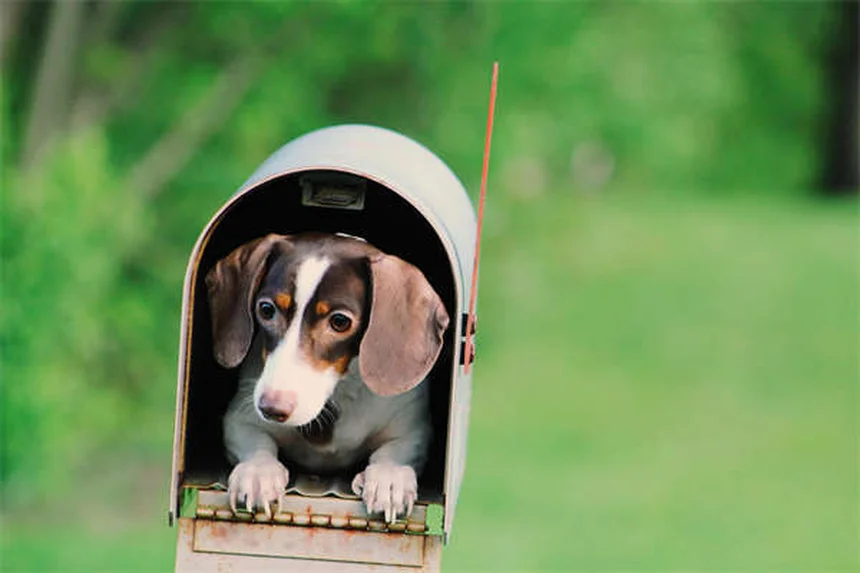Why Do Dogs Love Squeaky Toys? 3 Surprising Reasons Explained
Why do dogs love squeaky toys so much? The answer is: it's a combination of their natural instincts, our reactions, and pure fun! Dogs go crazy for those high-pitched squeaks because it taps into their prey drive, gets attention from their humans, and simply feels good to play with. I've watched my own dog's eyes light up when he hears that familiar sound - it's like magic! Whether your pup is a gentle player or a toy-destroying machine, understanding this behavior helps us bond even more with our furry friends. Let's dig into the fascinating science behind your dog's favorite playtime obsession.
E.g. :Why Does My Dog Bark So Much? 5 Common Reasons & Fixes
- 1、The Mystery of Squeaky Toys: Why Dogs Go Crazy for Them
- 2、Why Squeaky Toys Drive Dogs Wild
- 3、What If Your Dog Doesn't Like Squeaky Toys?
- 4、The Final Squeak
- 5、The Psychology Behind Toy Preferences
- 6、Beyond Squeakers: Alternative Play Options
- 7、The Human Role in Canine Play
- 8、The Evolution of Dog Toys
- 9、When Play Becomes Obsession
- 10、FAQs
The Mystery of Squeaky Toys: Why Dogs Go Crazy for Them
Ever wonder why your dog loses their mind when they hear that high-pitched squeak? Let's dig into this fascinating canine behavior together!
The Science Behind Dog Play
Dogs and humans share something special - we both love to play! This mutual enjoyment actually strengthens our bond with our furry friends. Play isn't just fun - it's an important part of your dog's mental and physical health.
Here's something cool: most animals stop playing as they grow up, but dogs keep their playful nature throughout life. This trait, called neoteny, makes dogs unique. Through domestication, we've actually encouraged dogs to stay playful - and thank goodness we did! Who doesn't love a good game of fetch?
Different Ways Dogs Play
Dogs enjoy two main types of play:
| Type of Play | Description | Examples |
|---|---|---|
| Social Play | Playing with others | Tug-of-war, chasing games with other dogs or humans |
| Solitary Play | Playing alone with objects | Chewing bones, tossing squeaky toys |
Did you know that when your dog plays alone with toys, they're actually showing behaviors similar to hunting? That's right - that squeaky toy might be triggering your pup's inner wolf!
Why Squeaky Toys Drive Dogs Wild
 Photos provided by pixabay
Photos provided by pixabay
The Prey Drive Connection
Here's a question: Could that squeak sound like prey to your dog? Let me explain. Dogs descended from wolves, and that hunting instinct is still strong in many breeds today.
Studies show that certain breeds - especially retrievers and herding dogs - are more likely to play with toys. This makes sense when you think about their jobs: retrievers were bred to fetch game, while herders needed to chase and control animals.
We're Part of the Fun Too!
Here's another theory: we humans reinforce the behavior. When your dog plays with a squeaky toy, you probably react - maybe by laughing, petting them, or playing along. Dogs are smart enough to notice this attention and want more of it!
But let's be honest - who can resist squeezing a squeaky toy? I know I can't! The sound is just too fun, and seeing our dogs get excited makes us want to do it more. It's a happy cycle for both of us.
Pure Joy Theory
Sometimes the simplest explanation is the best. Maybe dogs love squeaky toys because... they're just plain fun! That satisfying sound when they chomp down, the way the toy moves unpredictably - it's like the canine version of video games.
And it's not just squeaks - many dogs love any toy that makes noise. Grunts, crinkles, rattles - if it makes a sound, it's probably entertaining to your pup.
What If Your Dog Doesn't Like Squeaky Toys?
 Photos provided by pixabay
Photos provided by pixabay
The Prey Drive Connection
Don't worry if your dog ignores squeaky toys. Just like people, dogs have different preferences. Some go crazy for plush toys, others prefer rubber chew toys, and some would rather play tug-of-war than anything else.
I've seen dogs who treat new squeaky toys like a mission - they won't stop until they've removed the squeaker with surgical precision. Others keep the same toy intact for years. My own dog seems to enjoy the challenge of getting the squeaker out more than the squeak itself!
Finding Your Dog's Perfect Toy
Here are some tips for discovering what your dog loves:
- Try different textures - some dogs prefer soft plush, others like hard rubber
- Experiment with sizes - a toy that's too big or small might not appeal
- Consider your dog's play style - chasers might prefer balls, while chewers might like tough toys
- Watch how they interact with toys at the pet store
The Final Squeak
While we can't know exactly what's going through our dogs' minds when they hear that irresistible squeak, we can make some educated guesses. Whether it's tapping into their hunting instincts, enjoying our reactions, or just having a good time, one thing's for sure: squeaky toys bring joy to dogs and their humans alike.
So next time you hear that familiar squeak-squeak-squeak around the house, take a moment to appreciate this special part of the human-dog bond. And maybe join in the fun - I promise you'll both enjoy it!
The Psychology Behind Toy Preferences
How Breed Influences Toy Choices
You might not realize this, but your dog's breed plays a huge role in what toys they prefer. Working breeds like Border Collies often enjoy puzzle toys that challenge their minds, while retrievers can't resist anything they can carry in their mouths.
Let me share something fascinating - terriers were bred to hunt small prey underground, which explains why they often shake and "kill" their squeaky toys. Meanwhile, scent hounds might prefer toys that hold treats over noisy ones. Isn't it amazing how centuries of breeding still influence playtime today?
 Photos provided by pixabay
Photos provided by pixabay
The Prey Drive Connection
Puppies explore the world with their mouths, so they'll play with just about anything they can chew. But as dogs mature, their toy preferences often become more specific.
Here's a funny observation from my experience: senior dogs might not chase toys as much, but many still enjoy gentle squeaky play. I've seen 12-year-old Labs who act like puppies again when they hear that familiar sound!
Beyond Squeakers: Alternative Play Options
Interactive Puzzle Toys
If your dog isn't into squeaky toys, puzzle toys can provide mental stimulation that's just as rewarding. These clever gadgets make your pup work for treats, keeping them engaged for longer periods.
Did you know that just 15 minutes of puzzle play can tire out a dog as much as a 30-minute walk? That's right - mental exercise is just as important as physical activity for our canine companions.
Tug-of-War: More Than Just a Game
Many dogs absolutely love tug games, and there's good reason for this. Properly played tug strengthens your bond and provides excellent physical exercise.
Here's a pro tip: always let your dog "win" sometimes during tug games. This keeps them motivated and prevents frustration. And remember - if your dog gets too rough, the game stops immediately. This teaches them to control their excitement.
The Human Role in Canine Play
How We Shape Play Behavior
Ever notice how your dog brings you their favorite toy? That's not just coincidence - they've learned that play is more fun with you involved!
We humans actually teach dogs how to play through our reactions. When we get excited about a toy, they learn it's valuable. This explains why some dogs will only play when their favorite person is around.
Play as Training Opportunity
Here's a question: Did you know playtime can double as training time? Absolutely! You can use toys to reinforce commands like "drop it" or "leave it."
I've found that making training feel like play leads to better results. For example, practicing "come" becomes much more exciting when it's part of a game of fetch. Your dog learns faster when they're having fun!
The Evolution of Dog Toys
From Bones to High-Tech Gadgets
Dog toys have come a long way from simple bones and sticks. Today's market offers everything from automatic ball launchers to treat-dispensing cameras you can control from your phone!
But here's the funny thing - no matter how fancy toys get, many dogs still prefer the classics. I've seen pups ignore expensive electronic toys in favor of an old sock tied in a knot. Go figure!
Safety Considerations in Modern Toys
With all these options, safety should always come first. Always check toys for small parts that could be choking hazards, and supervise play with new items.
One important tip: rotate your dog's toys regularly. This keeps them interesting and lets you inspect each one for wear and tear. A good rule of thumb - if you can't bend it with your hands, it's probably too hard for your dog's teeth.
When Play Becomes Obsession
Recognizing Unhealthy Fixations
While most dogs enjoy healthy play, some can develop obsessive behaviors around toys. Watch for signs like refusing to eat or sleep because they're focused on a toy.
If your dog guards toys aggressively or can't relax when toys are present, it might be time to consult a trainer. Remember - play should always be fun, not stressful!
Balancing Play and Rest
Just like kids, dogs need downtime between play sessions. Overstimulation can lead to hyperactivity or even aggression.
Here's a trick I use: establish clear "play time" and "quiet time" signals. For example, putting toys away in a box signals that play is over. Most dogs quickly learn this routine, making transitions smoother for everyone.
E.g. :I recently learned that dogs enjoy squeaky toys because it reminds ...
FAQs
Q: Do squeaky toys remind dogs of hunting prey?
A: Yes, many experts believe the squeak triggers dogs' natural hunting instincts. When I watch my dog pounce on a squeaky toy, it's easy to see the connection - that intense focus, the shaking motion, it all looks like predator behavior. Studies show that breeds originally used for hunting (like retrievers) tend to be most interested in squeaky toys. The sound might mimic small animals in distress, activating your pup's inner wolf. However, we can't say for certain since we can't ask dogs directly. What we do know is that this theory makes a lot of sense when you observe how dogs play with these toys!
Q: Why does my dog destroy squeaky toys to get the squeaker out?
A: Your dog isn't being destructive - they're just following their instincts! Many dogs, like mine, see removing the squeaker as the ultimate challenge. It's like solving a puzzle with a tasty reward (from their perspective). The persistent chewing and digging behavior mimics how wild canines would work to get meat from bones. Some trainers call this "successive approximation" - your dog keeps trying different approaches until they achieve their goal. While it might be frustrating when they ruin a new toy, remember this is completely normal dog behavior!
Q: Are squeaky toys good for all dogs?
A: Not every dog enjoys squeaky toys, and that's perfectly okay. Just like people, dogs have individual preferences. I've met dogs who ignore squeakers but go crazy for rope toys or rubber balls. Puppies might need softer squeakers, while power chewers need extremely durable options. The key is observing what makes your dog happiest. If your pup doesn't care for squeakers, try different textures or interactive toys instead. Remember - the best toy is whatever keeps your dog engaged and happy!
Q: Can playing with squeaky toys help train my dog?
A: Absolutely! As a dog owner myself, I've found squeaky toys to be fantastic training tools. The exciting sound makes them perfect for recall training (getting your dog to come when called) and rewarding good behavior. Here's a pro tip: reserve special squeaky toys just for training sessions to keep them extra motivating. The sound becomes a powerful positive reinforcement. Just be careful not to overuse them - we want our dogs to stay excited by these toys, not get bored with them!
Q: Why do I enjoy squeaking toys for my dog as much as they enjoy hearing it?
A: This is one of those magical parts of the human-dog bond! When we see our dogs' tails wag and ears perk up at that squeak, it releases feel-good hormones in our brains too. Scientists call this "bi-directional oxytocin release" - basically, happiness is contagious between species! I know I can't resist making my dog's toy squeak when I see how happy it makes him. This mutual enjoyment strengthens our connection with our pets in ways we're still learning to understand.







